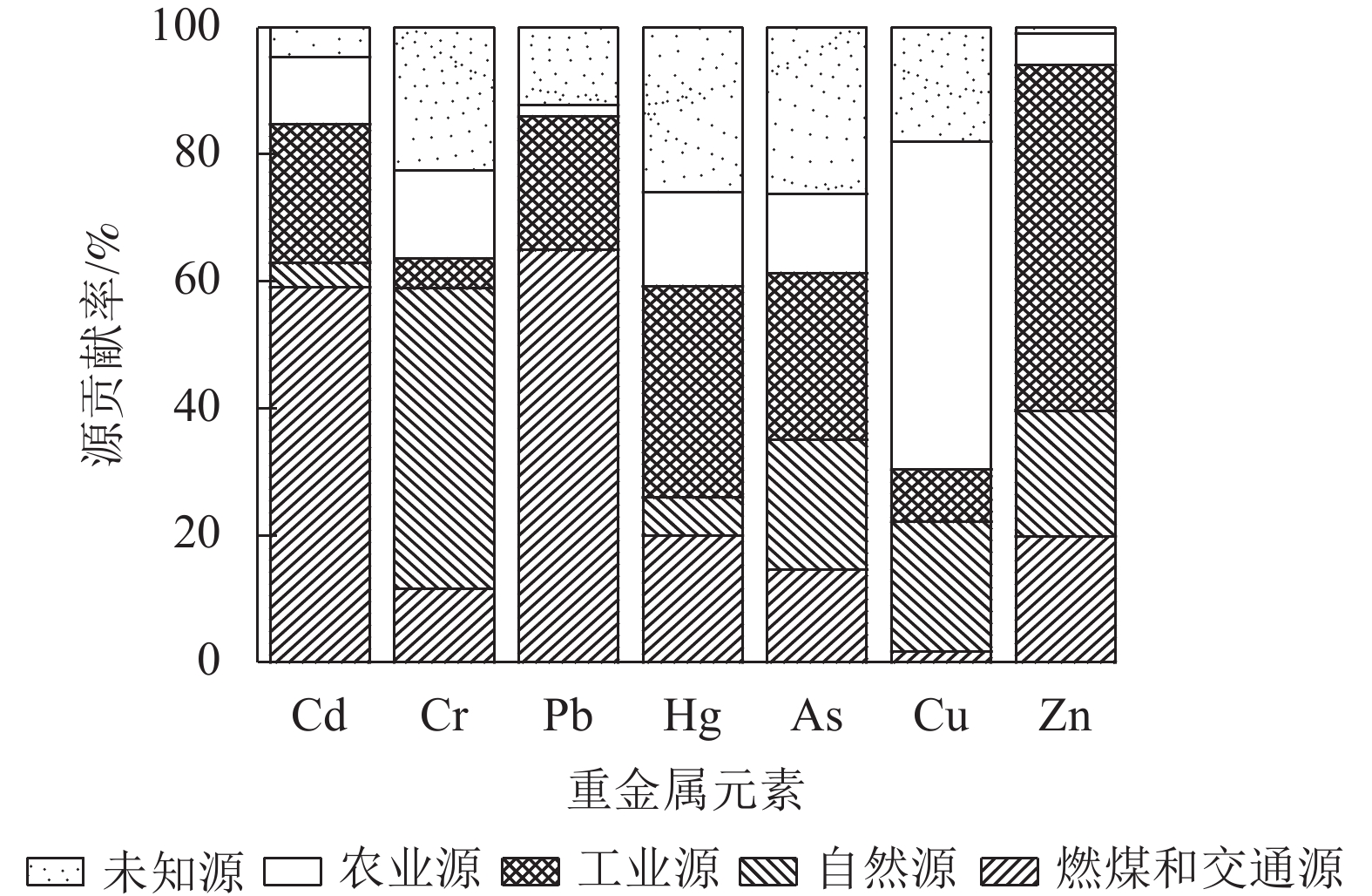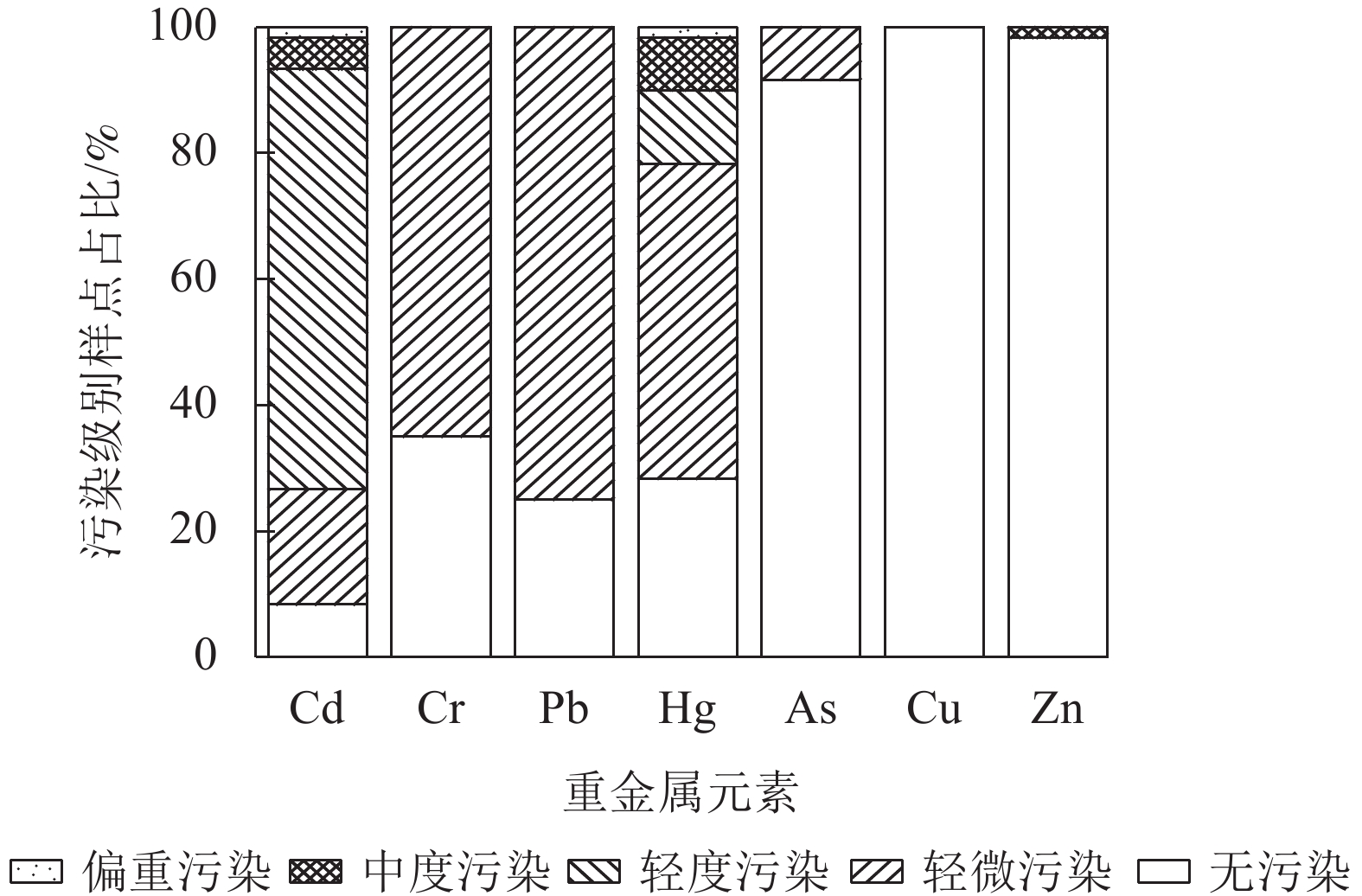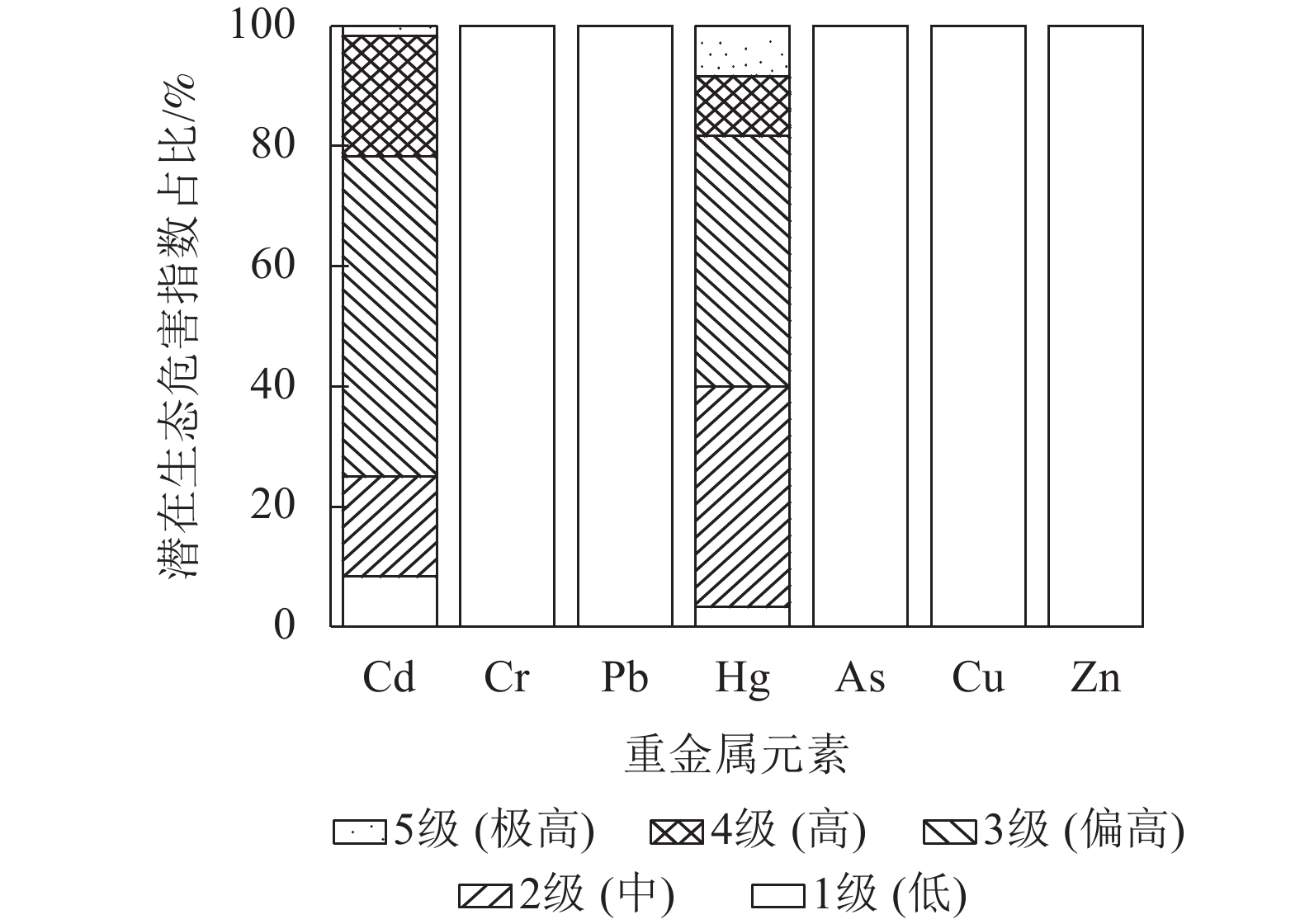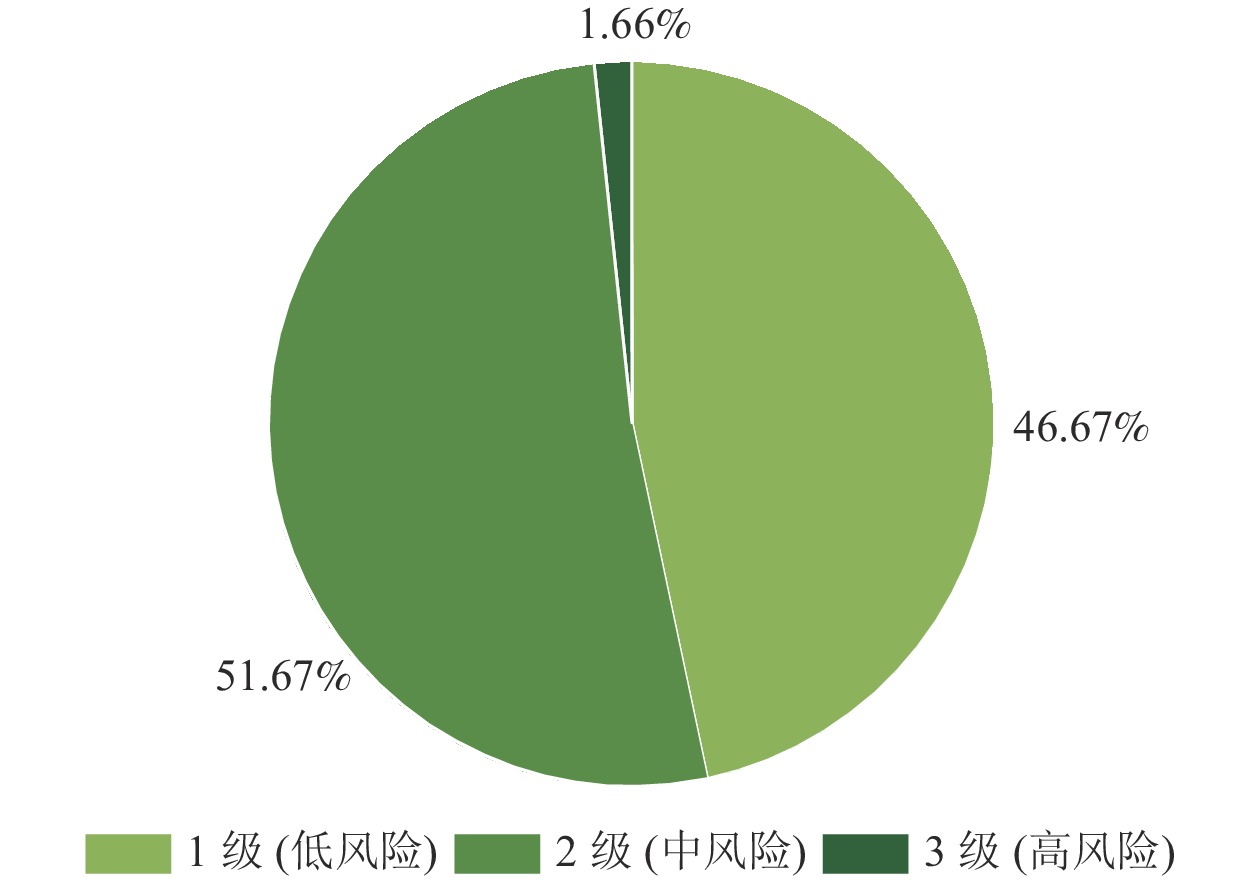-
绿地土壤作为植物生长的介质[1],其质量直接影响植物的健康生长和绿地经济效益、景观功能和生态意义的发挥[2]。近年来,随着金属冶炼、化石燃料使用、交通发展、农业种植等人类活动的增加,有害物质在绿地土壤中不断积累[3]。绿地土壤作为污染物的汇集地和净化器[4],受污染情况是值得关注的环境问题。重金属因不能被微生物降解且容易积累,生物毒性强[5],成为了重点关注的土壤污染物之一。重金属会抑制土壤微生物的生长代谢,破坏微生物群落,降低生物多样性和活性,从而降低土壤质量和影响植物生长,降低生物多样性,对生态系统造成危害[6]。重金属还可以通过食物链循环和人体接触等危害人体健康[7]。因此对绿地土壤进行重金属风险评估及源解析,可为改善和规划治理绿地生态环境提供重要依据。关于绿地土壤重金属的研究多集中在污染特征[8]、风险评价[9]和源解析[10]等。
通州区在2018年被选为北京城市发展副中心,启动了国家森林城市建设。根据2019年数据,通州区林木绿化率达36.99%,城市绿地率达46.43%,人均绿地面积达到42.96 m2[11]。伴随新城开发建设、大规模的企业工厂拆迁腾退,以及造林工程实施等,该区域大量低污染产业被淘汰改建成城市绿地,农田变更为林地,这使该地区土地利用类型变化较大,这些变化影响了该区土壤重金属元素质量分数[12]。绿地土壤的安全性和作为北京东南部生态屏障的通州区是否能发挥生态效益紧密相关,也和当地居民健康相关,因此,对该区域绿地土壤进行重金属调查和风险评价,可以为绿地土壤重金属源解析研究提供参考,也能为重金属污染防治和修复提供理论依据。
-
通州区位于北京市东南部,总面积为906 km2,地处北京、天津、河北三省交界,为京津冀一体化发展战略的中心。属于典型的暖温带半湿润大陆性季风气候。土质多为潮黄土、两合土、砂壤土,土壤肥沃,质地适中[13]。
-
2022年4月,在北京市通州区选取4种绿地类型,避开建筑密集和人类活动频繁区域布点,分别选取果园20个、苗圃10个、城市绿地15个、平原造林15个,共60个样点进行采样。以采样点为圆心均匀取半径5 m内的3个表层土(0~20 cm)均匀混合,按四分法取样1 kg。同时用全球定位系统(GPS)定位并记录采样点的地理坐标。研究区域及采样点位置如图1所示。土壤样品挑出石子、树叶等,经自然风干,研磨过筛后测定土壤pH、土壤重金属全量。
镉(Cd)、铬(Cr)、铅(Pb)、铜(Cu)、锌(Zn)、砷(As)和汞(Hg)测定前用HF-HNO3-H2O2微波消解法处理,测定用电感耦合等离子光谱仪(CP-2060T),As、Hg的测定用原子荧光光度计(AFS-8500)[14]。质量控制均使用标准参考土样(GSS-4和GSS-5)进行。
-
用PCA探究土壤重金属来源的组成。首先利用KMO和Bartlett球度检验PCA是否适用于本数据集。KMO统计量越接近于1,变量间的偏相关性越强,因子分析的效果越好。提取特征值大于1.0的主成分(PCs)。
-
采用PCA分析得到的归一化因子得分和特征向量进行APCS-MLR定量源解析。该模型假设所有潜在污染源均与最终受污染受体的污染呈线性关系。
-
采用地积累指数[15]和潜在生态风险评价法[16]对重金属进行污染评价。参照值采用北京市土壤背景值[17];修正系数取值1.5。地积累污染指数(Igeo)、土壤中重金属单项重金属潜在生态危害指数($E_{\rm{r}}^i$)和潜在生态风险指数(IR)的分级标准如表1所示。
级别 地积累污染指数 潜在生态风险指数 Igeo 污染等级 $E_{\rm{r}}^i$ IR 风险等级 1 Igeo≤0 无污染 $E_{\rm{r}}^i$≤40 IR≤150 低 2 0<Igeo≤1 轻度污染 40<$E_{\rm{r}}^i$≤80 150<IR≤300 中 3 1<Igeo≤2 中度污染 80<$E_{\rm{r}}^i$≤160 300<IR≤600 偏高 4 2<Igeo≤3 重度污染 160<$E_{\rm{r}}^i$≤320 600<IR≤1 200 高 5 Igeo>3 严重污染 $E_{\rm{r}}^i$>320 IR>1 200 极高 Table 1. Classification standard of heavy metal pollution
-
采用SPSS 18.0进行t检验、相关性分析、PCA和定量源解析;采用ArcGIS 10.8.1绘制研究区采样点分布图;采用Origin 9.0绘制土壤重金属风险评价图和源贡献率图。
-
研究区土壤pH 范围为7.51~8.66,平均值为8.11,除城市绿地的2个点位和苗圃的1个点位土壤呈强碱性,其他点位土壤均呈碱性。变异系数代表该元素在空间上分布均匀程度,>0.16~0.36时属于中等变异,>0.36时属于高度变异。由表2可知:Zn质量分数属于中度变异,Cd、Pb、Hg、As和Cu变异系数均>0.36,属于高度变异,表明受人类活动影响强烈[18];Cr变异系数<0.16,表明其质量分数相对均一。各重金属偏度均>0,属于右偏斜,说明各点位中重金属质量分数偏高的样点多。Cr、Pb、As、Cu和Zn质量分数属于正态分布,Cd和Hg质量分数对数转化后仍不符合正态分布。与北京市土壤环境背景值相比,通州区土壤中 Pb、As、Cu和Zn的平均质量分数没有超过背景值, Cd、Cr和Hg平均质量分数均超过背景值,超背景值倍数分别为3.4、0.6和2.1倍。各项重金属质量分数均未超过GB 15618—2018《土壤环境质量农用地土壤污染风险管控标准》[19]中相应用地类型的风险筛选值(均为总量筛选值)。
重金属 取值范围/
(mg·kg−1)平均值/
(mg·kg−1)标准差 变异系数 偏度 峰度 P(K-S检验) 背景值/
(mg·kg−1)农业用地风险值/
(mg·kg−1)Cd 0.03~2.35 0.53 0.25 0.472 2.990 16.107 0.000 0.12 0.6 Cr 38.78~62.70 47.87 5.45 0.114 0.621 0.095 0.000 29.80 250.0 Pb 1.68~31.20 11.95 5.80 0.485 0.880 2.037 0.000 24.60 170.0 Hg 0.06~1.30 0.25 0.24 0.953 2.636 7.360 0.000 0.08 3.4 As 1.83~12.50 6.71 2.65 0.395 0.148 −0.518 0.000 7.09 25.0 Cu 0.05~18.32 4.64 4.21 0.907 1.514 2.591 0.000 23.60 100.0 Zn 24.62~84.06 51.21 13.85 0.270 0.501 0.025 0.000 102.60 300.0 Table 2. Descriptive statistics of 7 heavy metal concentrations in the study area soil
-
如表3所示:不同重金属质量分数之间,Cd和Pb极显著相关(P<0.01),相关系数为0.754;Cr和Zn极显著相关(P<0.01),相关系数为0.579。As和Hg质量分数显著负相关(P<0.05)。Cu和其他重金属元素相关性不显著。
重金属 Cd Cr Pb As Hg Cu Cr −0.052 Pb 0.754** −0.153 As 0.141 −0.035 0.152 Hg −0.114 −0.211 −0.139 −0.305* Cu −0.052 0.081 0.083 0.117 0.039 Zn 0.033 0.579** −0.030 −0.077 −0.163 0.240 说明:**表示在 0.01 水平(双侧)上显著相关,*表示在 0.05 水平(双侧)上显著相关。 Table 3. Correlation coefficients of 7 heavy metals in the study area soils
KMO和Bartlett检验表明:KMO值为0.806,Bartlett球形检验P<0.001。研究区绿地土壤重金属质量分数主成分分析结果如表4,经过凯撒正态化最大方差法旋转后,提取4个因子包含7种重金属全部方差的83.05%,提取率超过70%,表明提取的4个因子能很好地体现原来7种重金属质量分数情况。第1主成分和Cd、Pb、Hg相关,占总体方差的27.07%;第2主成分和Cr、Cu、Zn相关,占总体方差的24.88%;第3主成分和Cd、As相关,占总体方差的16.32%;第4主成分和Hg、Cu相关,占总体方差的14.79%。
重金属 成分矩阵 旋转成分矩阵 PC1 PC2 PC3 PC4 PC1 PC2 PC3 PC4 Cd 0.870 0.049 0.317 −0.158 0.935 0.020 0.061 −0.071 Cr −0.206 0.820 0.078 −0.239 −0.109 0.870 0.083 −0.036 Pb 0.896 −0.001 0.285 0.022 0.928 −0.083 0.093 0.087 Hg 0.420 0.127 −0.709 0.310 0.072 −0.189 0.833 0.241 As −0.325 −0.460 0.595 0.275 −0.096 −0.308 −0.767 0.232 Cu 0.028 0.355 0.143 0.883 0.011 0.136 0.030 0.953 Zn −0.101 0.845 0.277 −0.027 0.048 0.869 −0.034 0.205 特征值 1.895 1.741 1.142 1.035 1.765 1.669 1.303 1.076 贡献率/% 27.07 24.88 16.32 14.79 25.22 23.85 18.62 15.37 累计贡献率/% 27.07 51.94 68.26 83.05 25.22 49.07 67.68 83.05 Table 4. PCA results of seven heavy metals in the study area soil
分析重金属质量分数可知:Cd、Cr和Hg质量分数的均值超过背景值,生态风险评价显示Cd、Cr、As和Hg有不同程度的污染,这4种元素变异系数显示高度变异,说明其受人为影响较大,因此对这4种重金属进行污染源贡献分析。根据PCA/APCS源解析计算(图2):Cd主要来自燃煤和交通源(62%),其次是工业源(23%)、农业源(11%);Cr主要来自自然源(61%)和未知源(29%);Hg主要来自工业源(45%)、燃煤和交通源(27%)、农业源(17%)和未知源(35%);As分别来自工业源(36%)、自然源(28%)、燃煤和交通源(20%)以及未知源(36%)。
-
地积累指数评价(图3)显示:Pb和Cu整体处于无污染等级;Cr和As分别有35.00%和91.67%处于无污染等级, 65.00%和8.33%处于轻微污染等级;Zn有98.33%处于无污染等级,有1.67%处于偏重污染等级;Cd和Hg分别有8.33%和28.33%处于无污染等级, 18.33%和8.33%处于轻微污染等级,66.67%和11.67%处于轻度污染等级,此外Cd分别有5.00%和1.67%处于中度污染和偏重污染等级。
潜在生态危害指数(图4)显示:Cr、Pb、As、Cu和Zn整体处于低风险。Cd和Hg分别有8.33%和3.33%处于低风险,有16.67%和36.67%处于中风险,有53.33%和41.67%处于偏高风险,有20%和10%处于高风险,有1.67%和8.33%处于极高风险。可见,Cd和Hg有较高的生态风险响应。
绿地土壤综合潜在生态风险评价(图5)显示:研究区整体分别有46.67%和51.67%处于低风险和中风险,另有1.66%处于重度生态风险。综合评价表明研究区潜在生态风险等级整体处于中低风险。
-
从重金属水平来看,研究区绿地土壤重金属质量分数较低,均未超标,绿地土壤环境整体处于清洁状态。但Cd和Hg的平均质量分数分别超出北京市土壤背景值3.4和2.1倍,可见有除土壤母质之外的来源。综合重金属风险评价结果来看,Cd和Hg在表层土壤中有一定累积,存在潜在生态风险。张沁瑞等[20]也指出北京东南郊表层土壤Cd和Hg质量分数相对较高。
本研究主成分分析表明:第1主成分与Cd、Pb相关,Hg也有一定载荷。已有研究表明该区域大气干湿沉降中Cd、Pb和Hg通量密度较高[21]。Pb常被认为是交通污染的标志性元素,汽车尾气和轮胎磨损也会造成Cd和Hg在土壤中累积[22]。Cd和Pb在苗圃、城市绿地和平原造林的水平都较高,这3种类型绿地比果园有更强的交通流通性,果园种植密集,且位置远离道路,机动车尾气污染相对少。随着无铅汽油的推广使用,2000年之后Pb主要来源为煤炭和冶金[23]。通州区近10 a能源消费为200~300 万t·a−1标准煤。煤炭燃烧产生的Hg会吸附于飞灰表面,而Cd和Pb会富集于炉渣,最后都可通过大气沉降进入土壤。因此,可认为第1主成分来自交通和燃煤源。第2主成分中载荷较高的有Cr、Zn和Cu。土壤Cr主要来源于成土母质[24];Cu和Zn质量分数远低于北京市土壤背景值,因此,可认为第2主成分是自然源。Cr质量分数超出背景值0.6倍,有除成土母质之外的来源。Cr的主要用途是制造合金和电镀,在合金和电镀生产过程中会产生含Cr的废气和废水[25]。 本研究Cr质量分数高的2个采样点在果园,其附近有电气设备厂、燃机配件厂和电线电缆厂等,含Cr废气可能通过大气沉降落到附近土壤表层。第3主成分与As和Cd相关。其中As有较大载荷,土壤中的As主要来源于成土母质。有色金属冶炼[26]、塑料稳定剂制作等工业生产活动也会产生Cd,并随粉尘通过大气沉降积累到土壤中[27]。Cd和As质量分数都高的采样点位于研究区北部,该区域分布有大量小型工业企业,土壤易受工业生产的影响。因此可以确定第3主成分为工业源。第4主成分的主要构成元素有Cu、Hg和As,其中Cu的质量分数远低于北京土壤背景值,不构成重金属污染。有机质富含Hg高亲和能力的官能团,过多施用有机肥会导致Cu、Hg和As局部地区水平偏高[28],受农业活动干扰Hg和Cu的变异系数也会偏高。有研究表明:畜禽粪便和农药是土壤中Cu的主要来源[29];除草剂、杀虫剂等含As农药以及磷肥的使用也会影响土壤As水平[30]。通州区2021年肥料使用量超过6 000 t,包括磷肥和有机肥;农药使用量超过300 t[17],包含除草剂、杀虫剂。因此可认为第4主成分是农业污染源。
根据PCA/APCS源解析计算,发现在土壤表层有一定积累的Cd大部分来自人为源(92%),Cd的累积和人类活动密切相关,在人为源中主要来自燃煤和交通源(59%),还有工业源(22%)和农业源(11%)。Hg分别来自工业源(29%)、燃煤和交通源(17%)、农业源(13%),还有35%的未知源。引起土壤Hg污染的人为活动主要包括工业生产、农业生产和日常生活等,Hg有很强的挥发性,容易受自然风化、人为排放和大气沉降影响[31],未知源可能与自然源和人为排放有关。Cr主要来自自然源(43%),人为源占28%。Pb大部分来自人为源。As、Cu和Zn来自人为源的比例分别是来自自然源的2.60、2.95和3.95倍。
地积累指数和潜在生态风险指数评价结果相似,均认为Cd和Hg对绿地土壤污染的贡献较大。地积累指数还显示Cr和As分别有65.00%和8.33%处于轻微污染等级,潜在生态风险指数显示Cr和As处于清洁水平。2种评价方法显示的差异性源于地积累指数评价是基于重金属质量分数与基准值(土壤背景值)的对比,侧重于重金属水平;而潜在生态风险评价结果受毒性响应系数影响较大[32]。研究区综合生态风险指数等级整体处于中低风险,绿地土壤相对清洁安全,但位于城市绿地的1个点位处于重度生态风险等级,需要引起警惕并重点监测。Cd和Hg为生态风险优先控制元素,可从控制燃煤、交通和工业排放方面进行控制。
-
北京通州区绿地土壤中 Cd、Cr、Pb、Hg、As、Cu和Zn的质量分数分别是0.53、47.87、11.95、0.25、6.71、4.64、51.21 mg·kg−1,各项重金属质量分数均未超过GB
15618 —2018《土壤环境质量农用地土壤污染风险管控标准》中相应用地类型的风险筛选值(均为总量筛选值)。通州区绿地土壤重金属污染源有燃煤和交通源、自然源(土壤母质)、工业源和农业源,对土壤重金属富集的贡献率分别为27.1%、24.9%、16.3%和14.8%,人为源的贡献率大于自然源。在土壤表层有一定累积的Cd有92%来自人为源,Hg有60%来自人为源,有35%来自未知源,推测Cd来源属于混合源。通州区绿地土壤质量整体处于中低风险等级。地积累指数指明有少量点位土壤Cd和Hg存在中度和重度污染,Zn有个别点位处于轻度污染;潜在生态风险评价指明少量点位Cd和Hg存在中等度到强度不同程度的生态风险,2种评价结果基本一致。建议合理燃煤和交通排放,监测督促工业污染的净化排放,科学开展农业活动,从管控陆地风险源来防止重金属污染,保障绿地土壤洁净安全。
Sources and contamination assessment of heavy metals in the green land soils in Tongzhou District, Beijing
doi: 10.11833/j.issn.2095-0756.20230435
- Received Date: 2023-08-25
- Accepted Date: 2024-01-09
- Rev Recd Date: 2023-12-29
- Available Online: 2024-05-22
- Publish Date: 2024-06-20
-
Key words:
- green land soil /
- heavy metal /
- contamination assessment /
- source apportionment
Abstract:
| Citation: | SUN Jingyu, SUN Xiangyang, LI Suyan, et al. Sources and contamination assessment of heavy metals in the green land soils in Tongzhou District, Beijing[J]. Journal of Zhejiang A&F University, 2024, 41(3): 517-525. DOI: 10.11833/j.issn.2095-0756.20230435 |




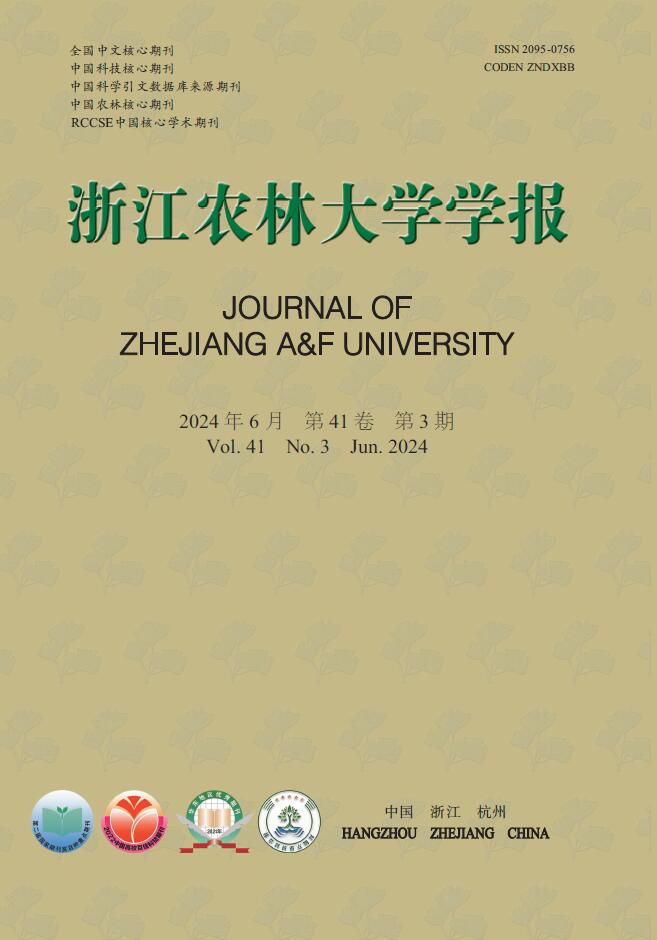


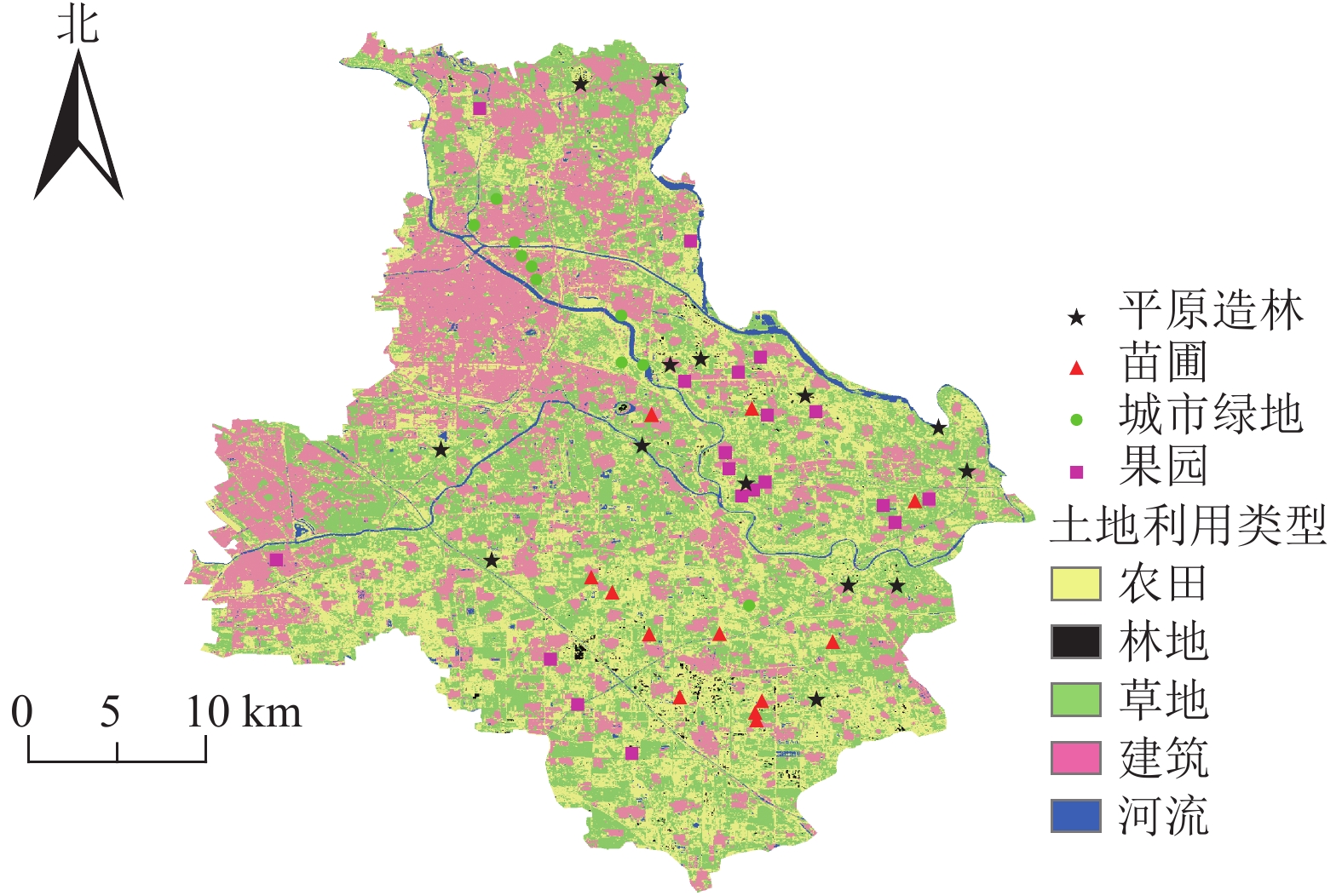


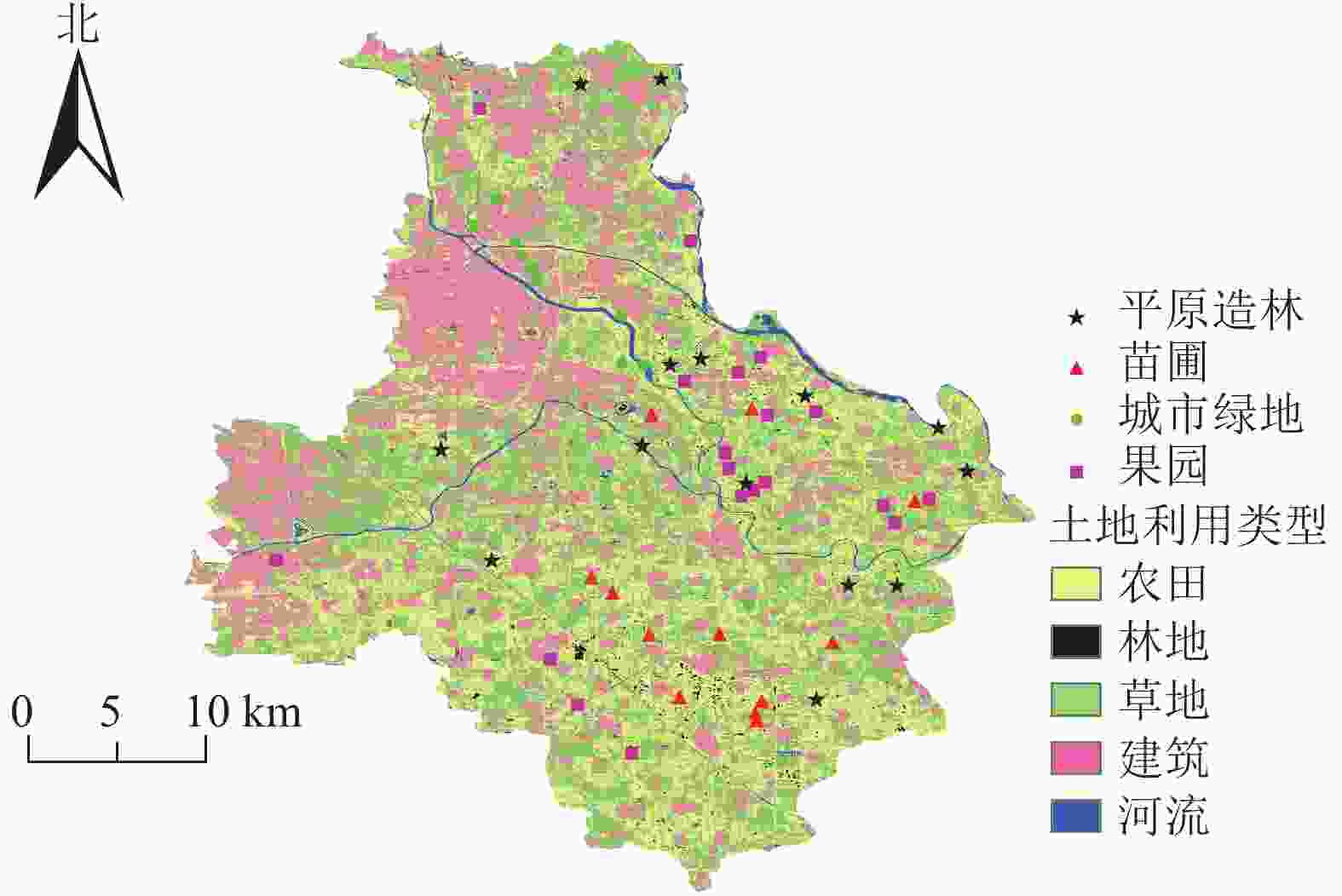
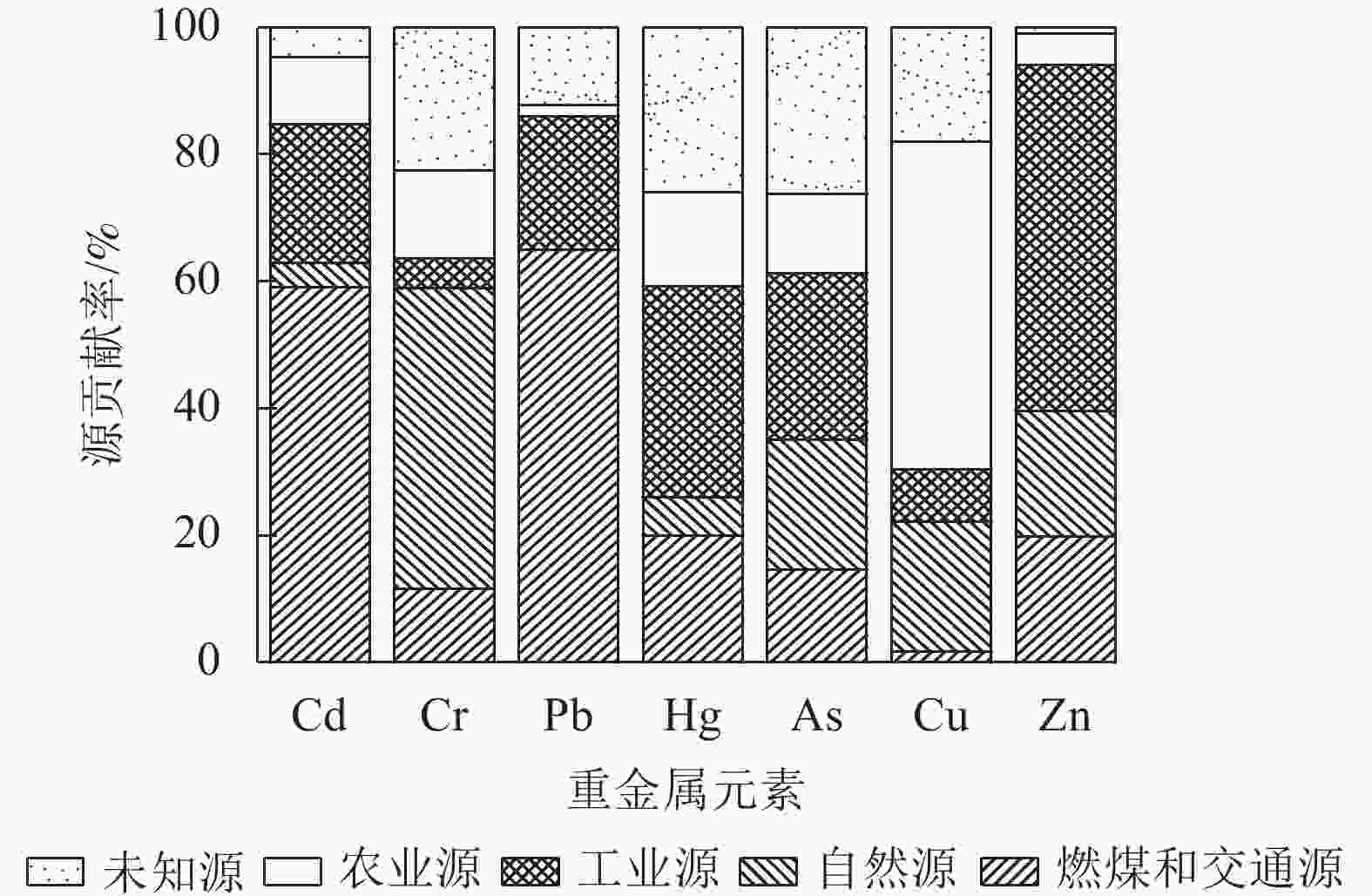
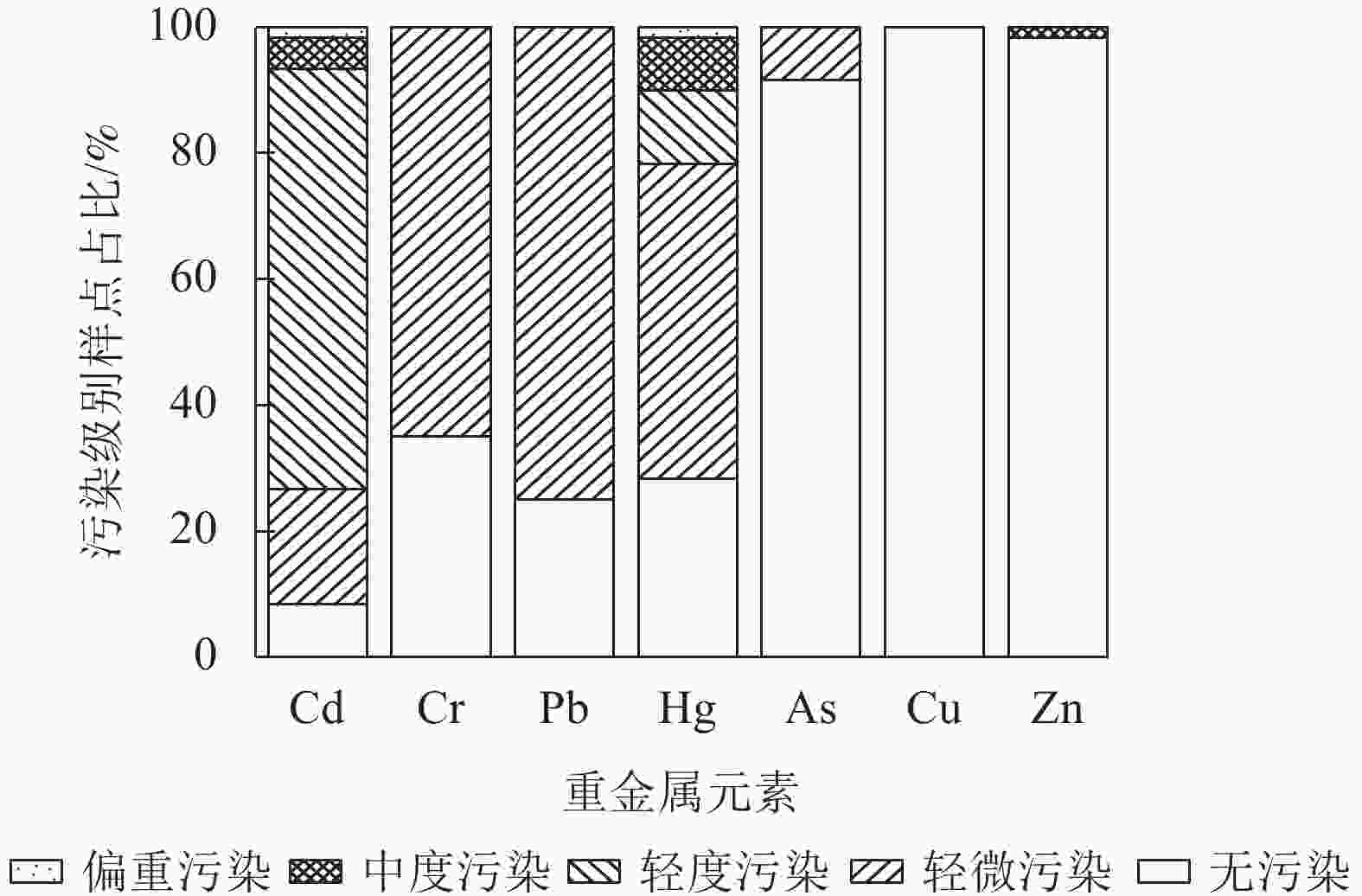
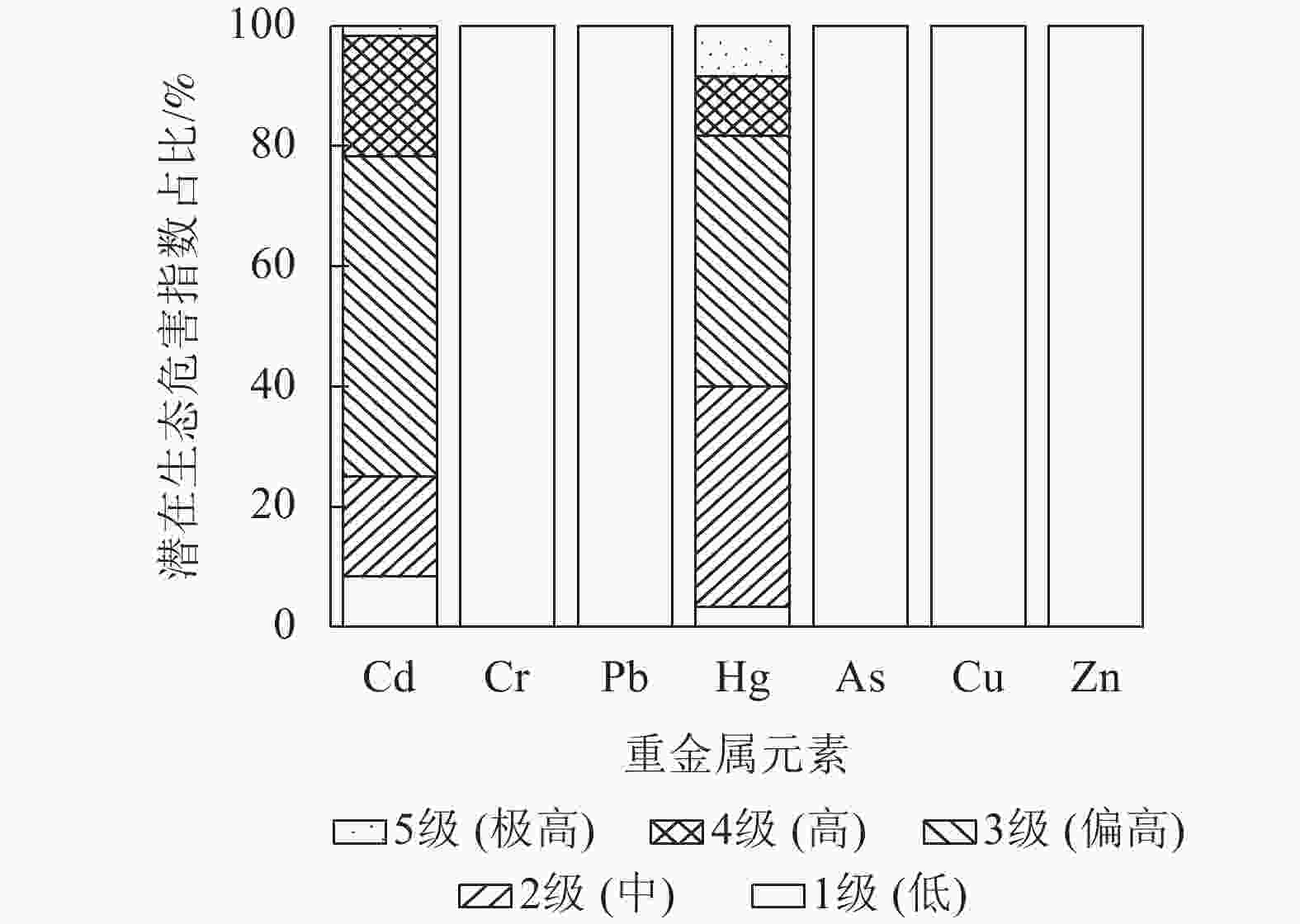
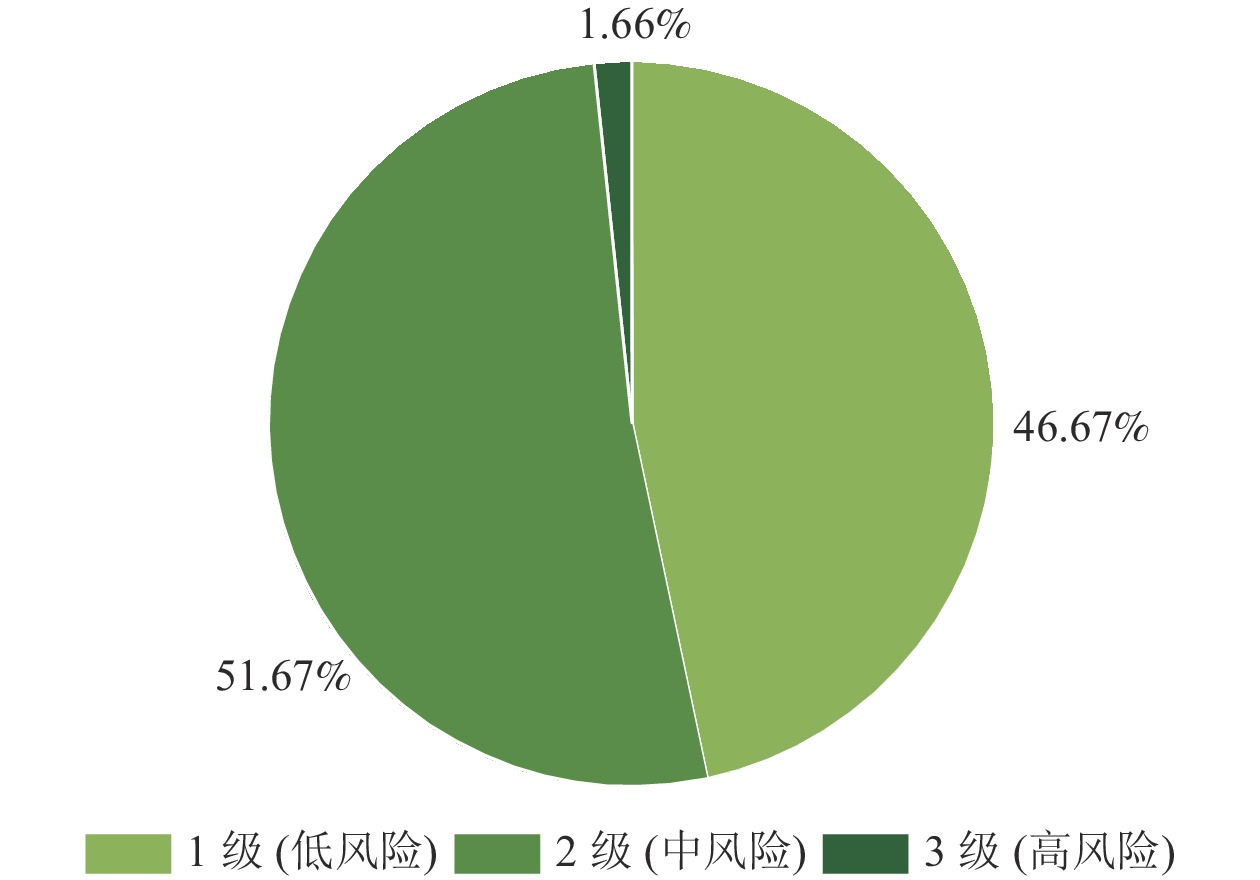
 DownLoad:
DownLoad:
